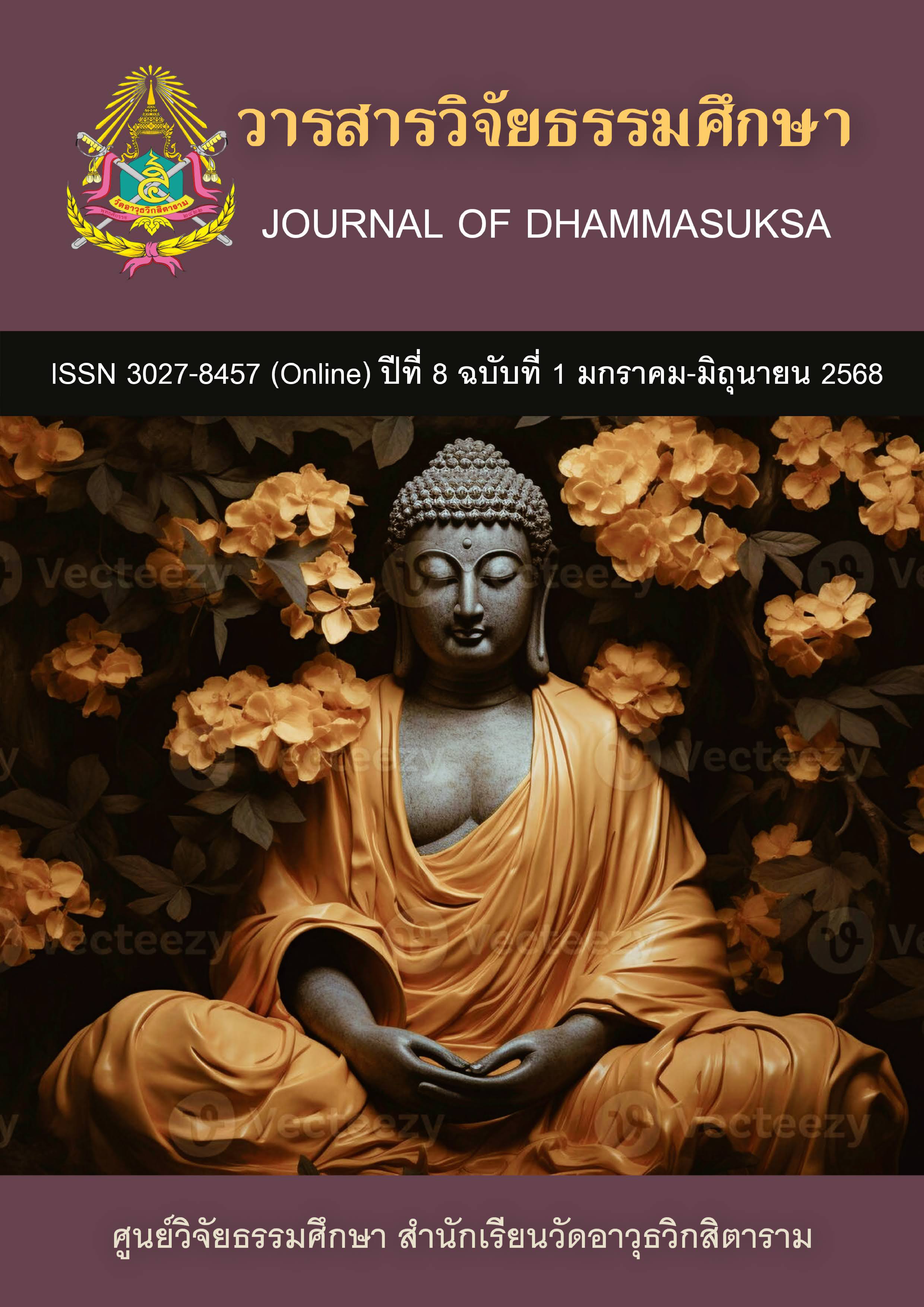MANAGEMENT MODEL OF VIRTUAL REALITY LABORATORY FOR ARCHITECTURAL & ENVIRONMENTAL DESIGN MAJORS IN UNIVERSITIES IN LIAONING PROVINCE
Keywords:
Management Model, Virtual Reality Laboratory, Liaoning ProvinceAbstract
The objectives of this research were: 1) to examine the components and indicators of management of Virtual Reality Laboratory for Architectural & Environmental Design majors; 2) to propose the Management Model of Virtual Reality Laboratory for Architectural & Environmental Design majors in universities in Liaoning Province and 3) to develop the implementation guideline used for Virtual Reality Laboratory management for Architectural & Environmental Design majors in universities in Liaoning Province.
The research was a mixed methodology, including qualitative and quantitative research. The population of the research consisted of administrators, VR laboratory leaders, teachers and students majoring in the Architectural & Environmental Design majors of 10 Arts and Design colleges and universities in Liaoning Province China, which have the Virtual Reality Laboratories, or are engaged in teaching and research activities related to Virtual Reality, 1057 people in total. A stratified sampling method was used to sample, totaling 290 persons. The instruments used for data collection were Document data record sheet, Semi-Structured Interview record, a five-level rating scale Questionnaire and record of Focus Group Discussion. The statistics used for data analysis were descriptive statistics and Confirmatory Factor Analysis.
The research findings revealed that: 1) there was total 5 components which consisted (1) Property and Environment , (2) Personnel, (3) Information, (4) Teaching, (5) Industry-University-Research and 19 indicators of management of Virtual Reality Laboratory for Architectural & Environmental Design majors in universities in Liaoning Province; 2) the Management Model of Virtual Reality Laboratory for Architectural & Environmental Design majors in universities in Liaoning Province found in this study was validated by CFA as valid and reasonable. The value of Relative Chi-square (χ2/df) = 1.301, Goodness of Fit Index (GFI) = 0.936, Adjusted goodness of fit index (AGFI) was 0.916, Tucker-Lewis Index (TLI) = 0.983, Root Mean Square Error of Approximation (RMSEA) =0.032, all in line with specified criteria. The standardized factor loading value of each item on its corresponding variable was above 0.6, and the P was less than 0.001, which were statistically significant, indicating that each indicator can well explain the variable it belongs to. In addition, the CR of the Models’ Property and Environment, Personnel, Information, Teaching, and Industry-University-Research were greater than 0.7, and the AVE was greater than 0.5. Therefore, the variables have a good combination of reliability and convergent validity. Indicating that in this study, the Management Model of Virtual Reality Laboratory for Architectural & Environmental design majors was feasible; 3) the developed implementation guideline contained 19 items used for Virtual Reality Laboratory management of Architectural & Environmental Design majors in universities under Liaoning Province.
References
Chen Zhizhi. (2013). The Overall Frame Design Strategy of Architecture Virtual Laboratory. Journal of Huizhou University (Natural Science Edition), 33(6), 124–128.
Cronbach, L. (1990). Essentials of psychological testing. New York, NY: Harper & Row.
Ji Xiaoyu. (2017). Research on the management of virtual simulation laboratories in local universities——Taking J College as an example. Fujian Normal University.
Jöreskog, K. G. & Sörbom, D., (1993). LISREL 8: User’s Reference Guide. Chicago, IL: Scientific Software International, Inc,.
Schumacker, R. E. & Lomax, R. G. (2010). A beginner’ s guide to structural equation modeling. (3rd ed.). New Jersey: Lawrence Erlbaum Associates.
Wang Jijun. (2018). University Laboratory Management: The Integration of System Management and Cultural Management. Information Recording Materials, 19(6).
Wang Shuqiang, He Xingyang, Zou Yiquan, Shi Junfeng, Liang Zhengwei, & Zhang Hui. (2014). Thoughts on the Construction of Green Building Virtual Simulation Experimental Teaching Center. Higher Architectural Education, 23(06), 134–137.
Wang Yuping, Xu Guoqiang, Wang Lei, & Ren Zhonglong. (2018). Research on the Construction Status and Improvement Measures of Architectural Laboratory——Taking the Laboratory of the School of Architecture of Inner Mongolia University of Technology as an example. Journal of Inner Mongolia University of Technology, 37(4), 293–297.
Yue Qingying & Yang Qinghua. (2021). Reflections on the Application of Project Management in University Laboratory Management. Educational Observation, 10(9).
Downloads
Published
How to Cite
Issue
Section
Categories
License
Copyright (c) 2025 Journal of Dhammasuksa Research

This work is licensed under a Creative Commons Attribution-NonCommercial-NoDerivatives 4.0 International License.



